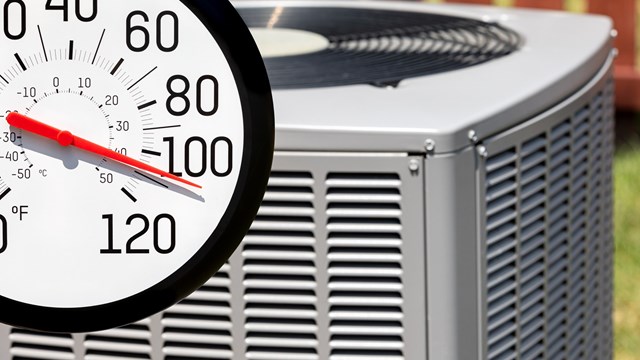New England residents have always thought of fresh water as an unlimited resource, but that attitude may be on the way out. With climate change, increased demand from residential development, and stricter regulation of public water supplies, bans on water use seem to be expanding beyond the typical—and brief—summer drought season.
Even regions that are literally "dripping" with wetlands and cranberry bogs, such as Cape Cod and the South Shore of Massachusetts, are facing tighter controls on drinking water supplies. Compounding the problem is the fact that these regions experienced rapid development in recent years.
To the south and west of New England, communities across the nation are working to cut water use, sometimes through legislative action.
From Texas to New York, municipal officials are looking to save water with a requirement that multi-family housing—whether it's co-ops, condos or apartment buildings—install submetering as a means of energy and water conservation.
Looking for More Water
Simply drilling more wells when demand increases, such as when new development is proposed, is no longer the simple solution. Stricter regulations from both state and federal environmental protection agencies have made the creation of new water supplies a difficult and expensive proposition, reports Stephen Densburger, presidentof Pennichuck Water Service Corp. of Merrimack, New Hampshire. "The alternative [to building new wells] is to manage the resources you already have," he states. His firm owns and/or operates water supplies for 150 communities that include condo and homeowner associations as well as municipalities.
He explains the challenges that communities face in terms of watershedcapacity, which can vary widely from town to town. Some rely on "unconsolidated wells," he notes, which "capture surface water that collects in the ground above the bedrock. The other type are 'consolidated wells' that are drilled deep into bedrock and capture water from fractures in the rock."
Both types of wells, along with surface water in reservoirs, ultimately depend on rainfall to recharge the water that they draw, Densburger points out. "In a dry summer, there's no recharge going into the ground," he notes, and it's summer when water consumption is highest.
In many communities of southeastern Massachusetts, underground features, whether impervious soil types or thin bedrock, cannot recharge fast enough for the demands of a growing population. In response, some towns, most recently Dedham and Westwood, have opted to purchase water from the Massachusetts Water Resources Authority that supplies Boston. The city of Brockton is using a desalination plant and the seaside town of Hull is considering the same.
For community associations that face water restrictions, applying conservation techniques involves a partnership, Densburger says. "When municipalitiespost a seasonal water ban, we notify condo boards or management companies about restrictions that must be applied… They then put out an alert to residents and are responsible for enforcing it. It's in everybody's best interest to cooperate."
As an alternative solution, he says that community associations sometimes install a separate well just for landscape irrigation. He also recommends changing landscape practices to cut outdoor water use through "xeriscaping…a technique for landscaping with plants that need minimum amounts of water." Also, thirsty lawns can be replaced with other, native ground covers or mulching.
Different Situations, Different Views
Not every community suffers through regular water restrictions. In contrast to the above-mentioned South Shore communities, a few miles west is the water-rich town of Grafton, Massa-chusetts, with a population close to 16,000. "We have had over 1,000 new water service hookups [installed] within the last 15 years," states Grafton's Water District Director Matthew Pearson. Located in the Blackstone Valley, he reports the underlying aquifer consists of "gravel and coarse material… We have several surface wells, no more than about 50 feet deep, which produce 700 gallons per minute," a volume thatcurrently exceeds the town's projected build-out needs. Even with that, he adds, "We have a back-up well site that could be developed."
Yields and quality controls for municipal water supplies are determined by state regulations. This may not result in the best use of natural resources, Pearson believes, because state regulators do not account for the fact that "each water district is different."
And strict regulations don't make it easy for communities facing water shortages. For them, solutions are few. "New wells are expensive," Pearson says, "because finding land [on which to site a well] is difficult, and there's increasingly less of it. Not only that, but it takes five to ten years [for a municipality] to develop a new well, between all the permitting, the bid process… and the actual construction."
Seeing Water as a True Commodity
While acknowledging that water bills are still relatively low in the Northeast, "Water may be the 'oil' of the 21st Century," states Todd Quarterman, president of Water Watch Corp. of Rochester, N.Y.
His firm installs utility meters in individual units in multi-family communities, whether it's new constructionor a retrofit of older buildings. The company also handles meter reading and billing, administering payments between unit owners or tenants and local water districts.
When water costs are hidden in a monthly condo fee, residents perceive water as being "free." Making consumers aware of and responsible for their ownwater use, he says, "is a good deal for everyone."
The idea of submetering as a means to cut costs and conserve a natural resource should be an easy "sell" for condo boards, but it depends upon the makeup of the board. Submetering, he notes, "typically saves 20-30 percent onwater consumption [since] everybody is responsible for their own use." Besides saving resources and lowering costs, an added incentive to retrofit for submetering—along with other conservation efforts—is that costs of implementation are tax deductible.
When the price of water is removed from the condo fee, he adds, "the fee could be reduced… or an anticipated fee increase could be avoided. In the long run, everyone will save money."
The decision on whether or not to install submetering boils down to "who gets the most advantage" from it, he says. "The biggest battle is getting all the condo owners on the same page." If board members are slanted toward families and are big water-users, then they're being subsidized by low-consumption, single homeowners, and they may fear a separate, and costly, water bill.
"It can take 18 months to two years for an association [board of trustees] to come around and make a decision about submetering. And in most new construction, it's already standard practice," notes Quarterman. "Most new condo developments submeter 100 percent of the utilities."
Even billing and meter-reading are simplified with submetering, with remote technology that eliminates the need for on-site, visual inspections. "Meters now have transmitters," says Quarterman, who adds, "even municipalities are switching over."
John W. Paul, vice president of operations for Water Watch, agrees that "conservation definitely occurs when submetering is installed" in multi-unit housing. If individual water meters are included in new construction, the extra cost is not much more than the price of the meters, about $150, he notes. "It's a retrofit that addscosts… with the labor that may be required." For a simple installation, that could be $200-$220 per unit, depending on how the original water pipes were configured.
Paul points out that a major advantage to submetering is that "you can figure out where water is leaking… Leakage can account for 10-20 percentof an association's water bill. With submetering you catch the problem faster, so maintenance is easier, and cheaper. Most of the time, it's simply a leaky toilet, and all you have to do is change out the flapper valves in toilet tanks."
If an association finds the costs of retrofitting individual meters to be too daunting, "you can use the RUB method… Ratio Utility Billing," Paul adds. "That's where units get individual water bills, based on a standard number of gallons-per-person instead of a meter. This actually results in lowered usage," he states, since residents are now looking at a dollar amount for their water and dealing with a bill payment.
Tight Resources Can Stymie New Construction
Single family homes in New England are often constructed with minimal review from local planning boards or water authorities. Multi-family units, however—such as in a condo community—are subject to all kinds of regulatory oversight. In towns where the aquifer is already stressed from over-development, boards are denying permits for multi-unit projects.
Where water supplies are not a problem, developers still face many hurdles. Federal, state, and even local requirements may control the design and operation of any drinking water system that supplies a residential community. These extra regulations add to construction costs.
Also, developers may have to consider availability of water for fire protection when designing a multi-unit project. Most communities are insisting on some kind of water storage system, such as an on-site tank or underground cistern, if a development does not have municipal water service and street hydrants.
In the town of Westminster, Massachusetts, Fire Chief Brenton McAloney describes regulations that his department has adopted, modeled after those of several other towns in southern New England. In any new subdivision construction, he notes, there must be adequate water flow to supply 250 gallons per minute for a duration of two hours. This translates to 30,000 gallons. If the project is outside the range of a municipal waterline, that 30,000 gallons has to come from an on-site well or storage tank.
Chief McAloney states, "This is a standard specified by the [home] insurance industry… It's not meant to be a burden for the developer. Actually, it can be a selling point for the project [because] with improved fire protection, insurance premiums will be lower for homeowners. Insurance companies take all these factors into consideration when they set rates on individual policies."
It's More Than the Money
For individual consumers, water usage—and costs—can vary considerably. In a two-adult household, water consumption averages three to five thousand gallons per month. As an example of water rate fees in two very different communities, Grafton residents are charged $4.57 per 1,000 gallons while the average residential customer in Brockton pays $3.50 per 1,000 gallons. Since Grafton is "water-rich" and Brockton is not, it's evident that factors—other than the abundance of water—are involved when communities set water rates.
The potential problems of entire, tapped-out aquifers go far beyond individual water bills, however. The promise of saving money may be the initial "hook" that promotes conservation, but saving the well from running dry will be the ultimate reward.
Marie Auger is a freelance writer in Westminster, Massachusetts.







Leave a Comment